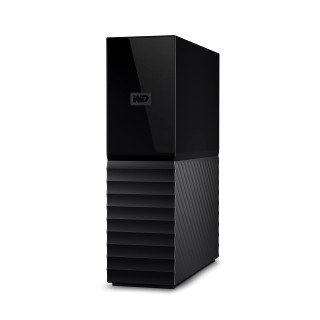In today’s hyper-digital age, data is everything. From simple text documents to enterprise-level databases, information drives innovation, business, and communication. Central to managing this data is Storage Media, a core component of IT hardware and computer hardware infrastructure. Whether in personal computing devices, large data centers, or portable electronics, storage solutions determine how data is preserved, accessed, and transferred.
This comprehensive guest post delves into the role of Storage Media in modern computing, exploring the evolution of storage technologies, types of storage devices, use cases, and best practices. Whether you’re a tech enthusiast, an IT manager, or a student of computer hardware, this guide offers a full-spectrum overview of the importance and diversity of data storage.
The Evolution of Storage Media
From Punch Cards to Cloud Storage
The history of Storage Media dates back to the era of punch cards, which were among the first methods used to record data for computer systems. These cards gave way to magnetic tapes, floppy disks, and hard disk drives, each bringing more capacity and convenience.
As the demand for faster, more reliable, and more compact data solutions grew, solid-state drives (SSDs), flash memory, and cloud-based storage options emerged. This evolution has mirrored the growing complexity of IT hardware and the global shift towards digitization.
Moore’s Law and Storage Innovation
As processing power doubled every few years (as per Moore’s Law), storage media had to evolve to keep up. Today’s computer hardware boasts not only powerful CPUs but also terabytes of storage capability within compact, energy-efficient formats.
Understanding the Basics of Storage Media
What is Storage Media?
Storage Media refers to physical or virtual devices used to store digital data. It includes everything from mechanical hard drives to remote cloud storage. These devices retain information either temporarily (volatile) or permanently (non-volatile).
Classification of Storage Media
Storage Media can be classified based on:
- Volatility – Volatile (e.g., RAM) vs Non-Volatile (e.g., SSDs)
- Accessibility – Sequential (e.g., tape drives) vs Random (e.g., HDDs, SSDs)
- Portability – Fixed (e.g., internal HDDs) vs Removable (e.g., USB flash drives)
- Medium Type – Magnetic, Optical, Flash, and Cloud
Each type has its distinct advantages, making it suitable for specific IT hardware applications.
Types of Storage Media in Computer Hardware
1. Hard Disk Drives (HDDs)
Still widely used in both personal and enterprise computing, HDDs use spinning magnetic disks to read and write data. They offer large storage capacities at a low cost per gigabyte.
Pros:
- High capacity
- Cost-effective
- Durable for long-term storage
Cons:
- Slower than SSDs
- Mechanical parts prone to wear
HDDs remain a vital component of traditional computer hardware, especially in data archiving and backup roles.
2. Solid State Drives (SSDs)
SSDs have revolutionized IT hardware by offering high-speed data access with no moving parts. Using NAND flash memory, they deliver faster boot times, application loads, and file transfers.
Pros:
- Faster performance
- More reliable (no mechanical parts)
- Energy efficient
Cons:
- Higher cost per GB
- Limited write cycles (though greatly improved in modern models)
SSDs are now common in laptops, desktops, servers, and gaming consoles, replacing HDDs as the primary storage medium in performance-driven systems.
3. Optical Storage: CDs, DVDs, and Blu-rays
Though declining in popularity, optical media still has its place in archival storage and multimedia distribution. Optical discs read and write data using laser technology.
Pros:
- Inexpensive
- Durable (when handled properly)
- Portable
Cons:
- Low storage capacity compared to modern alternatives
- Susceptible to scratches and environmental degradation
In computer hardware setups for media production and legacy support, optical storage remains relevant.
4. Flash Memory and USB Drives
Flash memory is widely used in USB drives, memory cards, and SSDs. It’s compact, fast, and durable, making it ideal for portable storage media.
Applications:
- Portable storage
- Cameras and mobile devices
- Firmware and boot drives
Flash memory exemplifies how IT hardware is becoming more compact without compromising functionality.
5. Cloud Storage
Cloud-based Storage Media is virtual, allowing users to save data on remote servers accessed via the internet. Services like Google Drive, Dropbox, and Amazon S3 have made cloud storage ubiquitous.
Pros:
- Accessible from anywhere
- Scalable
- Collaborative
Cons:
- Dependent on internet access
- Privacy and security concerns
In modern IT hardware strategies, cloud storage is essential for backup, disaster recovery, and remote collaboration.
Storage Media in Enterprise IT Hardware
Data Centers and Storage Area Networks (SAN)
Enterprise-grade computer hardware uses sophisticated storage solutions like SAN and NAS (Network Attached Storage). These systems allow for centralized storage management, high availability, and efficient resource allocation.
Redundancy and Data Integrity
RAID configurations, backup systems, and data replication techniques ensure that storage media in corporate environments is both reliable and secure.
Virtualization and Storage Pools
Modern data centers virtualize storage, pooling resources across multiple devices and allocating them dynamically to optimize usage.
Storage Media and Emerging Technologies
NVMe Drives
Non-Volatile Memory Express (NVMe) SSDs offer ultra-fast data transfer over PCIe interfaces. They are ideal for high-performance computer hardware such as gaming rigs, AI systems, and big data analytics platforms.
3D NAND and QLC Technology
Advanced NAND technologies allow for denser and cheaper flash memory. 3D NAND stacks memory cells vertically, while QLC (Quad-Level Cell) increases data per cell.
DNA and Holographic Storage
Though still experimental, technologies like DNA storage and holographic data storage promise exponential leaps in capacity and longevity—potentially revolutionizing IT hardware once viable.
Best Practices for Managing Storage Media
Regular Backups
Backing up data to multiple types of storage media (e.g., HDD, cloud) ensures redundancy and resilience against loss.
Encryption and Security
Use encryption to protect sensitive information, especially on portable or cloud-based storage.
Monitoring and Lifecycle Management
Implement storage monitoring tools to track capacity, performance, and potential failures. Replace aging storage media proactively to avoid data loss.
Choosing the Right Storage Media
When selecting storage media, consider:
- Capacity Requirements – How much data needs to be stored?
- Performance Needs – Is speed a priority?
- Budget Constraints – What is the cost per GB?
- Environment – Is it for a data center, mobile device, or remote office?
A hybrid approach—combining HDDs for bulk storage, SSDs for performance, and cloud for flexibility—is common in modern IT hardware systems.
Real-World Use Cases of Storage Media
Education and Research
Universities use tiered storage media solutions to support data-heavy research, learning management systems, and student databases.
Healthcare
Medical institutions rely on secure and redundant computer hardware to store electronic health records, medical images, and billing information.
Financial Services
Banks and financial firms use encrypted SSDs, secure cloud platforms, and disaster recovery systems to manage vast amounts of sensitive data.
Creative Industries
Photographers, video editors, and game developers utilize fast and high-capacity storage media for handling large multimedia files.
Environmental Impact of Storage Media
E-Waste Concerns
Old or obsolete computer hardware, including storage devices, contributes to electronic waste. Proper disposal and recycling are essential.
Green IT and Energy Efficiency
SSDs and flash memory are more energy-efficient than spinning HDDs. Data centers are adopting eco-friendly practices like liquid cooling and renewable energy.
Future Trends in Storage Media
AI-Driven Storage Management
AI tools can predict storage needs, optimize disk usage, and automate backup schedules, enhancing overall IT hardware efficiency.
Edge Storage
As edge computing grows, storage is moving closer to data sources—enabling low-latency processing in remote or mobile environments.
Decentralized Storage Networks
Blockchain-based systems like Filecoin and IPFS offer decentralized storage media solutions, disrupting traditional cloud models.
Conclusion: The Essential Role of Storage Media
As digital data continues to dominate every sector, storage media stands at the heart of the IT hardware ecosystem. From humble magnetic tapes to blazing-fast NVMe SSDs and omnipresent cloud platforms, storage technologies have shaped the capabilities and limits of modern computer hardware.
Understanding the strengths and limitations of each storage media type is essential for building efficient, reliable, and secure computing environments. Whether you’re backing up family photos or managing enterprise databases, the right storage solution can make all the difference.













Leave a Reply